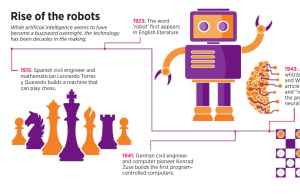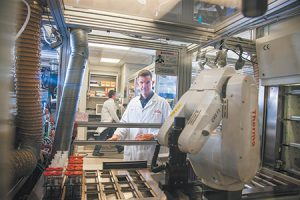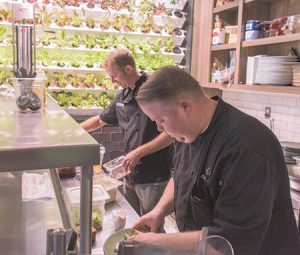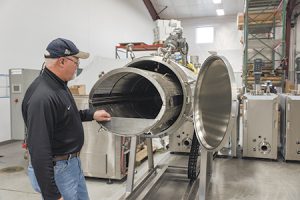
2020 Innovation Issue: Regenstrief’s half century of health innovations
The not-for-profit and its health research are a testament to the idea that all innovation is related—even when the connection appears tenuous at first glance.

The not-for-profit and its health research are a testament to the idea that all innovation is related—even when the connection appears tenuous at first glance.

Innovation means not just exploring new frontiers but also solving problems while doing so. And Christopher Vice, now at Studio Science, has a resume that reflects a career doing just that.

Design thinking has been around since at least the 1960s, and initially, its focus was in areas such as architecture, graphic design and industrial design, to produce physical products. But today, design thinking is used nearly everywhere. You can try it, too.
Design thinking requires participants to communicate freely, open their minds to new ideas and look at problems in new ways. Here are some exercises to help.
Design thinking is generally described as a five-step process, with specific names for each step. But in reality, the people and companies that use design thinking adapt their own take on it, by combining or breaking out some of the steps or using a more conceptual approach.
Examine the goal of each step in the design thinking process, plus one way to execute that step.

The Indiana Lawyer, which is also published by IBJ Media, won six awards, including first place honors in six categories.
In this week’s podcast, IBJ Managing Editor Lesley Weidenbener and technology reporter Anthony Schoettle discuss why IBJ publishes an Innovation Issue, how the paper settled on artificial intelligence as this year’s theme and what else is in the edition.

A growing number of Indiana corporations are formalizing in-house innovation, an effort aimed at remaining technologically relevant in a fast-changing business landscape.
I like to think of new ideas as a network—a collection of observations, experiences, insights, relationships and creative thinking that systematically come together to form something new.
Humans are inherently wired to strive, to master a craft we love and are good at, to seek improvement and progress, and to meaningfully contribute to something we deem worthwhile.
IBJ asked Allegion futurist Rob Martens to tell us how security technology will change our lives moving forward. His answers are as much about information and data as they are about physical barriers.
Patent owners have seen massive erosion of their rights coupled with a rise in basic enforcement costs and risks.
Indiana should differentiate itself by becoming the most aggressive talent recruitment-and-retention state in America. Think Alabama football, but on a bigger scale.

Rather than building a test kitchen that would never in itself generate income, Cunningham Restaurant Group decided to build Vida, a real restaurant where chefs experiment.

Bio-Response Solution’s flagship product liquefies human corpses, turning muscle, flesh and fat into a coffee-colored effluent that can be swirled down the drain.

Want to see innovations? Turn your ankle as a college athlete. Or, for that matter, get with the program of trying to prevent turning your ankle.

The city is using data to try to predict crime before it happens and solve problems with food deserts and prevent water main breaks.
Indiana ranks 44th nationwide in the capacity to meet the medication-assisted treatment needs of our population.

Indiana’s Management Performance Hub is organizing and analyzing data to help state agencies make better decisions about fighting the opioid scourge and other systemic problems.